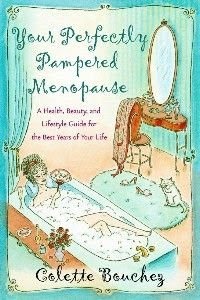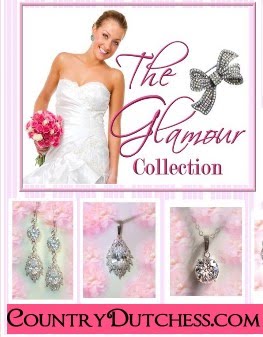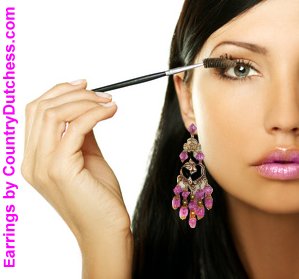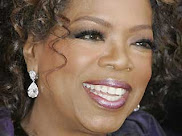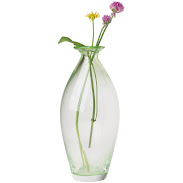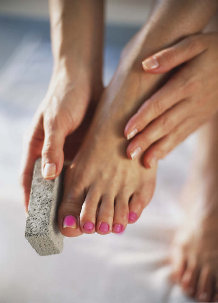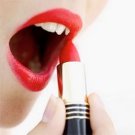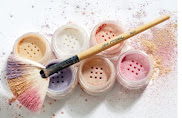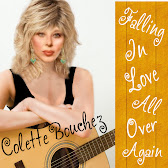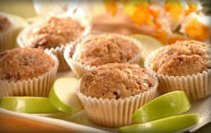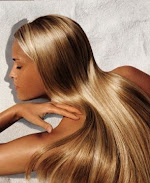As we age our feet change – and some of those changes can make wearing stilettos a lot more uncomfortable. Here’s what happens – and what you can do to comfortably cope. – By Colette Bouchez Perhaps no has ever worn stilettos better than the four fun-loving gals on Sex and The City. And none better than actress Kim Cattrall who portrayed the sexy, 50-something Samantha Jones on the show.
Perhaps no has ever worn stilettos better than the four fun-loving gals on Sex and The City. And none better than actress Kim Cattrall who portrayed the sexy, 50-something Samantha Jones on the show.
But in real life Cattrall has often been photographed with her designer stilettos dangling from her fingers, as she stumbles along the pavement on red, achy swollen tootsies.
And in fact, Sarah Jessica Parker recently remarked that part of the reason behind making the Sex and City movie now – as opposed to two years from now - had as much to do with the limited number of time they had left to successfully teeter around on those pricey Manolo Blahniks, as anything else.
And if you’re 40 or older, boy do you know how true that is! Indeed, the high heels you wore in your 20’s and 30’s somehow felt way more comfortable than anything you could wear today.
The reason: Experts say feet change with age, and at least some of those changes can turn even the most comfy high heels into killer foot wear.
"As you age, you lose some of the fatty deposits that normally protect the ball of the foot – and some of it also slides forward towards the toes, " says Morris Morin, DPM, director of podiatric medicine at the Hackensack University Medical Center.
The end result: As we slip our tootsies into those strappy stiletto sandals and step down, Morin says our weight is thrown precisely on the spot where we have the least protection.
"In extreme cases you actually have the bony ends of the foot grating down into the sole of the shoe with almost no protection at all," he says. Ouch!
Podiatrist Stuart Mogul, DPM says that by restricting the foot in a pointy toe high heel makes the problem worse. Indeed, putting weight on that restricted area then increases the risk of developing achy, painful bunions as well as corns and calluses.
“ Both the heel height and the point of the shoe can play a role, " says Mogul.
Moreover, our feet also get bigger as we age – and that can sometimes limit the type of shoes you can comfortably wear.
Indeed, if those narrow, high-heeled strappy sandals were a mainstay of your 20-something wardrobe, it’s likely this same style won’t feel the same on your chubby, wider 40-something foot.
“You have to remember to check your shoe size periodically – and dump the shoes that no longer fit,’” says Morin.
You may also have to look for shoes in a slightly different style, concentrating on shapes that reflect the current outline of your foot.
While most podiatrists are quick to dismiss high heels, claiming they’re bad news for women's feet, a recent study found they have at least one surprising benefit of particular interest to the 40-something gal: They might actually help tone your pelvic muscles and that in turn might help control some of the incontinence problems that occur with increasing age.
In a study published earlier this year in the journal European Urology, Italian researcher Dr. Maria Angela Cerruto found that high heels tilt a woman’s pelvis in a way that ultimately helps tone muscles in the abdomen and pelvis – in much the same way as the familiar Kegel exercise.
The study, which involved 66 women, revealed that standing with your feet at a 15 degree angle to the floor (about the same angle as a 3 inch heel) can reduce electrical activity in pelvic muscles – which says Cerruto indicates these muscles are more relaxed. This she says improves their strength and their ability to contract – and it is that ability that helps control mild incontinence in a way similar to what the Kegel can do.
High Heel SOS: 6 Tips To Feel Better Fast
With or without the pelvic benefits, if you love your high heels like I do, no amount of discomfort is going to convince you to give em up. At the same time, what good is that great pair of red patent leather stilettos if all you can do is sit and admire them?
So to help your feet look and feel better in high heels the experts I talked to offer this advice.
1. Buy shoes that fit. Sounds obvious, I know. But if you’re anything like me you have at least a half dozen pair of shoes in your closet right now that cause your feet to slide forward so far it leaves a thumb size gap of space behind your heel. Experts say this is indicative of an incorrect fit. Look for shoes with a narrow heel and a wider toe box to increase the chance of a better fit and take pressure off toes and the ball of the foot.
2. Invest in a good pair of insoles. If a full-length insert makes shoes too tight, try for a silicone pad for the ball of the foot, where the most pressure occurs.
3. Take advantage of the new thicker heels and oxford stilettos – the advantage being better stability and balance. This in turn will help keep pressure evenly distributed throughout your foot and take the painful focus off the ball of your foot.
4. Pay attention to the "slope" or "pitch" of the heel. The higher the heel, the more your foot is apt to slip forward, crushing your tootsies into the toe box. But what can also matter is the slope or “pitch” of your heel – the degree of the drop from the top of the heel to the flat part of the shoe. The more gradual the slope, say experts, the less your foot will slide forward. To check, turn the shoe sideways and just look at it- you’ll notice right away if the slope is a roller coaster pitch down, or a gentle sloping hillside.
5. Remember, feet get larger as you get older so if you’re having problems finding a shoe that’s comfortable, consider going up a half or even a whole size, or trying for a wider width. Ideally the ball of your foot should land in the widest part of the high heel. If it doesn’t – particularly if it’s pushed forward to where the shoe is narrower then try a smaller size, or a wider width.
Tuesday, September 30, 2008
High Heels & Mid Life Crisis: Why Your Feet Hurt
Thursday, September 25, 2008
Tracking Down The Scent of Youth
Research shows that as we age our body gives off a different scent then when we are young. Here’s how to smell like the fountain of youth - By Colette Bouchez
 There is anti-aging make-up, anti-aging skin care, and anti-aging treatments too numerous to count. But the latest buzz to hit the Boomer circuit: Anti- aging fragrances.
There is anti-aging make-up, anti-aging skin care, and anti-aging treatments too numerous to count. But the latest buzz to hit the Boomer circuit: Anti- aging fragrances.Indeed, if you want that new face lift or Botox injection to be really convincing, some perfumers are telling women you’ve got to start smelling as young as you look. And there’s actually some science to back up the concept.
It seems that as we age, both men and women produce more of a body chemical known as “noneal” – which occurs as a result of breakdowns of fatty acids in the skin.
According to Wataru Takekoshi a scientist working for Japanese skin care company Shiseido that breakdown results in a type of unsaturated aldehyde which has an unpleasant ‘ greasy ‘ odor with grassy undertones. And that, say experts is the natural body scent of aging.
And in fact in one study published in the Journal of Investigative Dermatology researchers found that women over 40 have more than twice the levels of 2-Nonenal in their skin than younger women. The same study found women over 40 also have higher levels of Omega 7 and certain other lipids which, when broken down in the skin may contribute to a kind of "odor" commonly associated with older people – both women and men.
In their research 15 men aged 20 to 60 were asked to smell various fragrances and associate it with the age of the women who would wear them. Among the scents tested were vanilla, lavender and rose, together with scents from fruits like apple, and vegetables including broccoli.
The result: Almost universally the men associated the scent of roses with an “old” woman, while associating the scent of apples with young women.
This almost mimics the findings of a study done in 2005 by the Smell and Taste Research Foundation. Here it was learned that the scent of grapefruit was most often associated with the perception of youth while roses signaled that retirement is closing in.
Covering Up The Smell of Age
While some say any good perfume can tuck away the secret of your age, not everyone agrees. Perfumer Harvey Prince says it takes a specific combination of essential oils and fragrances to not just cover up the scent of age, but actually neutralize all those smelly lipid odors.
Not coincidentally, Prince just released his first anti-aging fragrance, a perfume called Ageless Fantasy, which he says not only does away with that “old lady” smell, it can knock ten years off your perceived age. At least to those close enough to take a good whiff!
While Prince says the formulation of Ageless Fantasy is a proprietary secret, I can tell you that the main essences found in the fragrance are tropical notes of pineapple, mango and leafy greens which the company says promotes memories of a happy childhood (but maybe only if you grew up in Hawaii and not Brooklyn!). The fragrance also contains oils of Lily of the Valley and peony, which are thought to promote feelings of well being and happiness. In combination Prince says it's the magic formula that makes a woman smell younger than springtime.
As unique a promise as this is, Ageless Fantasy is not the originator of the concept. Following the discovery of noneal back in 2000 Shiseido produced a line of products called Care Garden designed specifically to neutralize the odors of fatty acid breakdowns in 40 plus skin. They report Care Garden became one of the fastest selling lines in the history of the company.
Smell Younger – For Less!
Whether or not Ageless Fantasy will leave you smelling younger is anybody's guess - but it’s going to cost you to find out. A 3 ounce bottle retails for $120.
So if you want to try sending a few years down the drain - and still leave enough in the piggy bank for one more wrinkle injection – there are any number of drugstore shower gels or body lotions that might do the trick; just lather up daily. And if you don’t smell younger, at least you’ll smell cleaner. :)
You might also enjoy reading:
More Hope In A Jar : The Latest Anti Aging Skin Care Ingredients
Hope or Hype: Anti Aging Make Up
RedDressDiary.com - The Destination For Truly Fabulous Women Over 40!
Friday, September 19, 2008
Food Fight: Don't Rely on Will Power To Lose Weight
For decades we blamed a lack of will power on our diet failures. Now some experts say your will has little do with your waistline. By Colette Bouchez If you’re always blaming that mystical “ lack of will power” for failing off your weight loss wagon, there's something you should know: The very newest weight loss theories say will power has nothing to do with it!
If you’re always blaming that mystical “ lack of will power” for failing off your weight loss wagon, there's something you should know: The very newest weight loss theories say will power has nothing to do with it!
Indeed, while it was long believed that having a “weak will” was the number one reason that folks just couldn’t say “ no” to that plate of cupcakes or bowl of chips, today a growing number of experts believe that the mystical concept of will power is just that - a mystical concept that doesn't really exist. At least not in regard to food temptations.
“People like to think of will power as some magical force over which they have no control – but in reality there is no such thing,“ says Gerard Musante, PhD, founder and director of Structure House, an in-patient weight loss program in Durham, North Carolina.
Moreover, Musante says crediting some mystical “force ” with the ability to control your life only serves to make you less, and not more in control of your appetite. And more likely to fail at your weight loss plan.
Psychologist and weight control expert Dr. Warren Huberman agrees.
“Once you buy into the idea that something else is controlling you, then on some level you also acknowledge that what you eat is not within in your control – and that line of thinking puts you on the fast track to weight loss failure,” says Huberman, who frequently counsels patients at the NYU –Langone Medical Program for Surgical Weight Loss.
So if it’s not a weak will, then what exactly is behind that uncontrollable urge to eat the entire gallon of ice cream - when we really should be satisfied with just a Dixie cup?
Many believe “temptation” can take a somewhat surreptitious route.
Indeed, experts say the first path is paved with learned behaviors, coupled with conscious choices. In short, those of us who are able to resist that plate of Sarah Lee brownies – or harder still, eat just one and walk away – have acquired the skills to do so, and are making the choice to act on those skills.
What about the rest of us, who simply can’t walk away? Well, it seems we’re acting on a learned behavior as well, and some decision-making is also involved. The only difference is, most of us don’t see it quite that way. Instead, we blame our inability to say "no" to food on a lack of will power.
“What’s key here is to recognize that within each of us lies the power to make these correct food choices –it’s not about will power, nothing is controlling us, it is about choice,” says Huberman.
And what about those moments when we just reach for that extra slice of pizza without even thinking? Sometimes, says Huberman, it’s just a plain old bad habit calling the shots.
“It can actually be a conditioned response to reach for that last slice of pizza, even when you really don’t want it – old food habits die hard,” he says.
The Biology of Temptation
Psycho-social dramas aside, there is yet another force tempting and teasing our appetite – and it has nothing what so ever to do with what we think or feel about food.
Quite simply it is our biology at work – and the primitive but never ending evolutionary urge to keep our bellies full.
If the only thing around when it does is a plate of Dove chocolates, then Dove chocolates are goin’ down the hatch. And while that may make you feel weak-willed, the truth is, you’re just plain hungry - and unprepared to deal with it.
The Devil Made Me Eat It !
While not every weight loss expert agrees on what’s driving our food temptations, most say the power to choose what we eat is very much within our control.
1. Try to eat at regular intervals, and eat the same time every day. This will keep your appetite from raging out of control when nothing is sight but a box of donuts.
3. If you’re going to be around decadent, high cal foods – whether it be the local PTA cake sale or your mother’s house for dinner – decide ahead of time how many items you will sample, then stick to it. For example, allow yourself 4 “tastes” or “ 3” full portions – and don’t go over.
4. Eat “mindfully”. If you think about every piece of food you put in your mouth you’ll naturally put in less.
5.In the immortal words of weight loss guru and Our Lady of Weight loss author Janice Taylor, if you have gorged yourself on a forbidden food, don’t beat yourself up for a lack of will power. Instead, forgive yourself and simply “ Move On.”
The Hot Flash Solution: A Breakthrough Program for Controlling Hot Flashes & Night Sweats!
Wednesday, September 17, 2008
New Anti Wrinkle Ingredient Fights Acne Too!
 So here you are, looking in the mirror and thinking, “This just isn’t fair …wrinkles and acne?”
So here you are, looking in the mirror and thinking, “This just isn’t fair …wrinkles and acne?”But truth is as we enter our middle years, and particularly as our reproductive hormones take on a life of their own, it’s entirely possible that in between those fine lines and wrinkles you may also see a brand new bumper crop of acne breaking out as well - even if you didn't have acne as a teen.
“Almost all acne is hormonal. …and adult acne occurs for the same basic reasons as adolescent acne…. cells respond abnormally to androgens,” says dermatologist Dr. Richard G. Fried, author of Healing Adult Acne.
In fact, experts say that middle-aged acne is usually driven by the same type of hormonal activity we see in puberty – except in reverse. And much like those bouncing hormones of your teen years, today’s middle-aged hormonal surges can cause your skin to react in myriad ways, including causing acne breakouts.
For many women problems are compounded by another common mid life skin condition known as acne-rosacea.
“Hormones play a strong role in the development of rosacea and many women notice flares around the time of the menses, and particularly around menopause,” says Palm Beach dermatologist Dr. Ken Beer, author of Palm Beach Perfect Skin.
As Beer explains, this dermatologic condition causes an acne-like appearance (red bumps and lumps, sometimes filled with fluids) plus it has the added component of causing facial flushing –as if we need more of that this time of life!
Acne rosacea can occur on it’s own, or in conjunction with traditional acne and both can easily flare in the middle years.
While there are certainly enough acne treatments on the market, finding one that works in midlife can be a real challenge, particularly if you’re also concerned with reducing the appearance of lines and wrinkles.
The reason: Since most over-the-counter acne formulations are drying to the skin, they pull moisture from cells – and that make lines and wrinkles look much worse.
At the same time, most over-the-counter anti-wrinkle treatments, particularly rich creams and serums, can irritate sensitive acne prone skin and may increase breakouts, or worsen one that’s already started.
So what’s a middle-aged girl with a pimple and a wrinkle to do?
I’m happy to tell you that new hope – and new help – has finally arrived! There are in fact, several brand new products designed to fight wrinkles and acne in a single swoop!
The New Anti-Wrinkle Ingredients
The anti aging skin care ingredient creating a lot of new buzz these days are plant based growth factors known as cytokininsins -and for good reason. First, they are fast proving to be a powerful anti-wrinkle treatment, working to not only protect skin cells that manufacture collagen and elastin, but also increase their activity. Since it is collagen and elastin that helps give skin that plump, youthful lifted look, keeping them working at full tilt is one way to thwart the natural aging process.
Moreover, cytokinins also have the potential to slow down the breakdown of collagen and elastin cells that results from environmental factors such as the sun and pollution – now considered the two leading causes of premature skin aging.
But what makes cytokinins such an especially enticing skin care ingredient is that they possess all these powerful anti-aging effects and yet don't aggrevate acne or rosacea. In some studies cytokinins even had a beneficial effect on these conditions.
Indeed, in one 12 week study conducted by Dr. Jerry McCullough from the University of California on the patented cytokinins growth factor known as Pyratine 6, research revealed an increase in skin moisture by some 41%, and a decrease in fine lines by almost 30%, with early results appearing as little as 2 weeks.
Anti-Wrinkle - Anti-Acne Care Combined!
Perhaps the best part of this new anti- aging/anti-acne treatment approach is that you don't have to wait years or even months to harness the power - some of these ingredients are available right now!
That’s said, I have found it- as well as the Jan Marini products - for sale online, but both purchases come with a word of caution. It’s a good idea to have any skin condition checked at least once by a board certified dermatologist before buying any self- care treatment products.
Not only is it possible that your skin condition might be caused by something else entirely, sometimes dry, irritated and even acne-prone mid life skin can be a symptom of a systemic disease such as thyroid disorder - and may require entirely different medication to bring relief.
You might also be interested in reading:
Return of the Face Lift- And Other New Ways To Avoid Growing Old!
Friday, September 12, 2008
Good & Bad News for Hot Flash Herb
 For the millions of hot flashing baby boomers the news is both good and bad.
For the millions of hot flashing baby boomers the news is both good and bad.The good: The Columbia University School of Nursing in
The bad: The study is released on the heels of a US Pharmacopoeia advisory linking the use of black cohosh to liver toxicity.
An editorial published recently in the journal Menopause is indicative of the confusing status of black cohosh, even among medical professionals.
“We must also be willing to state without shame that there is much we do not know about black cohosh . . . and the treatment of vasomotor symptoms,” wrote the editorialist.
The new research, conducted by Columbia’s Dr. Reame and her colleagues at
And there in might lie its success as a hot flash treatment.
“ Black cohosh increased opioid receptor availability in brain areas where
estrogen effects in the same direction have been previously observed,” says Reame, whose study was published this month in the journal Menopause, a publication of the North American Menopause Society.
Although there have already been dozens of studies on black cohosh showing it can reduce hot flashes in some women, Reame says this is the first time researchers have actually demonstrated it has precise affects within the brain itself.
While no one is completely certain about what causes a hot flash, many believe it is related to snafus in the hypothalamus gland – the area of the brain that helps control core body temperature.
When estrogen levels drop or fluctuate – as they do in the years directly preceding - and following - menopause, the hypothalamus gets an erroneous signal that the body is hot and needs to cool down. It is that “mixed signal” which then causes blood vessels to dilate so the excess heat can escape.
It is that sudden and rapid release of body heat that causes the warm flushed feeling we know as a “hot flash”.
How The Study Was Done
The trial, involved six women all of whom met the clinical definition of “menopause’. They had not used any hormone treatments for at least six months and all reported having hot flashes and night sweats.
At the start of the study each woman underwent both sleep tests and brain-imaging PET scans, documenting various neurological activities related to hot flashes and night sweats. This was followed by 12 weeks of 40mg a day dosing of oral black cohosh supplements, after which the tests were repeated.
The results: “Although these data cannot be extrapolated to other study populations, the results obtained are nevertheless suggestive of neurobiological effects of black cohosh affecting systems relevant to the pathophysiology of hot flashes,” says Reame.
The Black Cohosh Controversy
An essential part of the black cohosh compound is believed to be a substance known as “triterpene,” a natural chemical that some research shows may have estrogen-like effects. For the past 40 years, black cohosh has been a mainstay in the European community for the treatment of hot flashes. The German E- Commission ( their equivalent of the FDA) approves the supplement for this purpose and reports that currently more than 1.5 million women have successfully used it to treat menopause symptoms.
And while studies on thousands of women show it can be effective, other research has shown it may have little or even no effect over and above a placebo.
But Reames' study suggests – and many experts believe – the differences may be due, in large part, to the brand of black cohosh supplement used in some of the trials. Since black cohosh is a food supplement, it is not subject to the same kind of FDA scrutiny as a drug. And that means the level of effective ingredients can change dramatically from brand-to-brand, or even within a brand itself.
To date, nearly all of the black cohosh clinical trials that have yielded positive results – including Reames’ study – used the brand name black cohosh supplement known as Remifemin. This is a German made black cohosh supplement that is not only “standardized” to contain a consistent level of ingredients, those ingredients are reportedly present in levels that studies show are necessary to achieve results.
That said, recent reports of liver toxicity – including 1 death - occurring in about 30 women using a variety of black cohosh supplements has prompted the US Pharmacopoeia (a nongovernmental organization that sets standards for food ingredients and dietary supplements) to publish it’s intent to require all black cohosh products sold in the US to carry a warning label.
In response, the American Botanical Council (ABC) filed comments stating that case reports linking black cohosh to liver toxicity are largely unsubstantiated, and that the standards used by the USP were not adequate to properly access safety.
In 2006 the Australia's Therapeutics Goods Administration (TGA), which regulates that country’s dietary supplement market, required all products containing black cohosh to carry a label warning about liver toxicity, a decision they say was based on review of 47 cases of related liver toxicity worldwide.
The US Pharmacopoeia's’s decision about supplements sold in the US is expected before the end of the year.
In the meantime, if you have any liver related problems, including hepatitis C, or a possibility of having undiagnosed hepatitis C, talk to your doctor before taking any black cohosh supplements.
The Hot Flash Solution: Safe, natural ways to take control of hot flashes and night sweats.
Wednesday, September 10, 2008
Study: A Woman's Walk Reveals Her Sex Life
A new study reveals women who have orgasms walk differently from women who don’t – and you won't believe what gives it all away! – By Colette Bouchez As Fashion Week opens in New York City, those fabulous super models may be showing off more than just another set of designer duds. They could be giving us a bird’s eye view of their sex life …without even knowing it.
As Fashion Week opens in New York City, those fabulous super models may be showing off more than just another set of designer duds. They could be giving us a bird’s eye view of their sex life …without even knowing it.
In fact, if new research out of Belgium is correct, the way a woman walks is a dead-giveaway of her degree of sexual satisfaction –including whether or not she’s regularly having orgasms.
The new study just published in The Journal of Sexual Medicine suggests that women who regularly have vaginal orgasms walk differently from women who don’t – and it’s not all that hard to figure out which is which!
“In the sample of healthy young Belgian women (half of whom were vaginally orgasmic), a history of vaginal orgasm …was diagnosable at far better than chance level,” says lead study author Aurelie Nicholas, MA, of the Université Catholique de Louvain, in Belgium where the research was conducted.
So what was it the women who were orgasmic did that was different?
Well if you’re thinking they “walked sexy” – as in the old Marilyn Monroe hip swinging, or the obviously provocative Madonna-esque stances, guess again.
The orgasmic give-away say the researchers was closer to what you’re likely to see Heidi Klum or Giselle Bundchen doing on the Victoria Secret runway – walking with high energy and a kind of freedom of movement that signifies both sensuality and confidence.
“The discerning observer may infer a women's experience [with] vaginal orgasm from a gait that comprises fluidity, energy, sensuality, freedom, and absence of both flaccid and locked muscles” say the researchers.
In other words, a woman that walks freely may be more open to her sexuality – and feel freer to express herself between the sheets. A woman whose gait is stiff, or whose muscles seem limp and out of condition, may be giving away the fact that she’s also not giving in to wild abandon in the bedroom.
Walk This Way
This is certainly not the first study to connect body movement to sexual activity. Indeed many researchers have suggested that we consciously – or unconsciously- convey our sexual desires by the way we walk, sit, stand and move, particularly in the presence of the opposite sex.
But in this study researchers say they go far deeper to analyze not just body language, but also attitude, sexual confidence and self-esteem.
In fact, the researchers contend that when compared to women who have had orgasm those who haven’t display more immature psychological defense mechanisms, express less satisfaction with their relationships, and less satisfaction with life in general. These women were also more likely to convert psychological problems into physical complaints – a phenomenon known as “somatization.”
Women who are able to achieve orgasm, however, not only walked with a freer, more open gait, they also displayed a more open attitude towards life in general.
The study involved Belgium college aged women who filled out a questionnaire on personal sexual behavior, including questions on orgasm. Ten women who had vaginal orgasms were selected along with 10 who reported they had not.
The 20 women were then videotaped walking normally, and their tapes were shown to 2 male professors of sexology and two female research assistants.
The reviewers assessed the way the women walked and moved, and based on that made a determination as to whether or not they believed they were experiencing orgasms.
Their assessments were then compared to the questionnaires filled out by the women.
The end result: The reviewers were able to determine which women were orgasmic over 81% of the time – which was a far greater percentage, say researchers, then brought about by mere chance.
So, what's the moral of the story here: It’s not the height of your stilettos that matters – it’s how you walk in them that really counts!
You may also enjoy reading:
Hope Or Hype- Can You Really Look Younger?
Sex And The City And Menopause
Or visit www.RedDressDiary.com - The Destination For Fabulous Women Over 40!
Friday, September 5, 2008
Study: For Weight Loss, Timing Is Everything!
New research reveals it’s the protein you eat for breakfast – not lunch or dinner- that could be the key to weight loss and appetite control. And now Starbucks says they can help! - by Colette Bouchez
 There is an entire school of diet-speak that hails protein-rich foods as the key to weight loss.
There is an entire school of diet-speak that hails protein-rich foods as the key to weight loss.Now comes a new study that says it may not be protein itself that impacts weight – but the time of day you eat it that matters most.
More specifically, new research published in the British Journal of Nutrition offers evidence that eating protein-rich foods for breakfast - like lean ham , low fat cheese or eggs - does more to control your appetite all day long then if you were wolfing down these same foods for lunch or dinner.
According to study author Wayne W. Campbell, PhD, while there is a growing body of research which supports eating high-quality protein foods when dieting to maintain a sense of fullness, " This study is particularly unique in that it looked at the timing of protein intake and reveals that when you consume more protein may be a critical piece of the equation."
And the tenet holds true he says, even when the calorie count of each meal is roughly the same.
Each of the meals,including the protein plate, have under 350 calories, and most have under 10 grams of fat. But the trick is ... you have to eat only one. :)
Tuesday, September 2, 2008
New Study: Weight Gain Shocker!
New research shows that a common food additive may be causing you to gain weight. Here's what you need to know - by Colette Bouchez The food additive monosodium glutamate (MSG) has been blamed for a lot of health concerns - but if new studies are right you can also add weight gain to the list.
The food additive monosodium glutamate (MSG) has been blamed for a lot of health concerns - but if new studies are right you can also add weight gain to the list.
Indeed, this sub-category of the compound glutamate has been linked to everything from hot flashes and diarrhea to hives, headaches, joint pain, dizziness, heart abnormalities and more in those who are sensitive to it.
This week, research published in the journal Obesity, found the risk of being overweight was increased by a whopping 175 percent in people who consumed a lot of foods containing MSG - independent of the calories the consumed.
“Animal studies have indicated for years that MSG might be associated with weight gain,” said lead researcher Ka He, MD, from the University of North Carolina School of Public Health. He says his team is the first to back up the claims with human research that he believes proves it's true.
Not surprisingly, the food additive industry challenges the findings, which were dismissed by the Glutamate Association as “having “no practical significance”. They cite World Health Organization data indicating those who consume MSG aren’t at any greater risk for weight gain.
How MSG Could Pack On The Pounds
Monosodium glutamate is one form of the basic compound known as “free glutamate”. While other additives – including certain flavorings or colorings, as well as other taste enhancers -can also contain glutamate (such as malted barley, caramel flavoring, even some milk powders), MSG contains about 78% free glutamate – the highest found in any compound.
According to past research, animals fed MSG developed lesions in the hypothalamus, and area of the brain linked to appetite. He and his group also noted in the study that the animals exhibited signs of leptin resistance, a hormone that has been shown to also influence hunger and satiation – how full we feel after we eat.
In the new study researchers reviewed the eating/cooking habits of 752 healthy Chinese men and women aged 40 to 59. All study participants indicated they cooked meals from “scratch” and did not consume commercially prepared foods – indicating they knew exactly what ingredients were in their meals.
Of the group, 82% regularly used MSG in food preparation – mostly in the form of soy sauce, at a level equal to about .33 g per day (or 0.07 teaspoon).
The researchers then measured the BMI - body mass index – of all those in the study, comparing the numbers among those who used the most MSG daily to those who used the least.
The result: Study participants who had the highest consumption of MSG had a 175 percent increased risk of having a BMI of 25 – which meets the international standard for obesity.
The researchers say they also found a significant prevalence of excess weight in those who used MSG, compared to those who didn’t use this flavor enhancer.
“We saw this risk even when we controlled for physical activity, total calorie intake, and other possible explanations for the difference in body mass,’ says He.
The Glutamate Association points out that the FDA along with many other government organizations around the world have deemed MSG to be a safe food additive.
This however, could change if the new findings are confirmed in other studies.
Currently food manufacturers are required to list MSG on the ingredient label. However, many food purists argue this ingredient is often “hidden” by listing it under alternate names such as hydrolyzed vegetable protein (HVP), autolyzed or hydrolyzed plant protein (HPP or APP), autolyzed yeast. Sodium caseinate, Calcium caseinate, and numerous other terms.
Click here to learn more about MSG labeling - and discover the hidden sources.
You might also be interested in reading:
Hungry Again? It's In Your Genes!
Good Vibrations: New Way To Lose Weight?
Or visit www.RedDressDiary.com - The Destination for Fabulous Women Over 40!



